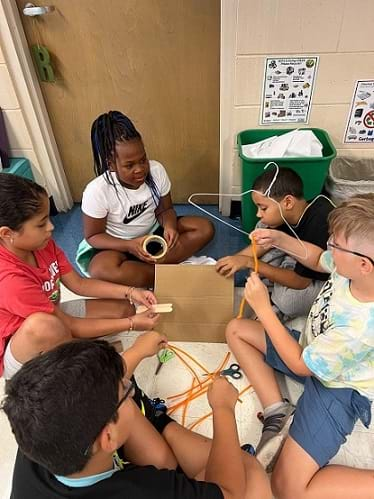
Mastering Classroom Management Proven Tips for Teachers
Introduction
Classroom management is a critical aspect of teaching that impacts student behavior, engagement, and learning outcomes. Mastering effective classroom management strategies is essential for creating a positive and productive learning environment. In this article, we’ll explore proven tips and techniques that teachers can use to enhance classroom management and foster a conducive learning atmosphere.
Establishing Clear Expectations
One of the foundational principles of effective classroom management is establishing clear expectations from the outset. Communicate your classroom rules, procedures, and behavioral expectations clearly and consistently to students. Ensure that they understand what is expected of them in terms of behavior, participation, and academic performance. Consistency is key to reinforcing expectations and maintaining a structured learning environment.
Creating a Positive Classroom Culture
Fostering a positive classroom culture is essential for promoting student engagement and cooperation. Create a welcoming and inclusive environment where students feel valued, respected, and supported. Encourage open communication, collaboration, and mutual respect among students. Celebrate diversity and create opportunities for students to share their perspectives and experiences, fostering a sense of belonging and community.
Building Relationships
Building positive relationships with students is crucial for effective classroom management. Take the time to get to know each student individually, understanding their strengths, interests, and challenges. Show genuine interest in their lives outside of the classroom and be approachable and empathetic. Establishing strong teacher-student relationships builds trust and rapport, making it easier to address behavioral issues and maintain a supportive learning environment.
Implementing Consistent Consequences
Consistency is key when it comes to implementing consequences for misbehavior. Clearly outline the consequences for breaking classroom rules or disrupting the learning environment, and enforce them consistently and fairly. Ensure that consequences are appropriate, proportional, and focused on teaching students responsibility and accountability for their actions. Consistency in enforcing consequences helps establish clear boundaries and expectations, reducing instances of disruptive behavior.
Utilizing Positive Reinforcement
In addition to consequences for misbehavior, it’s essential to incorporate positive reinforcement to encourage and reward desired behavior. Recognize and praise students for their efforts, achievements, and positive contributions to the classroom. Use a variety of reinforcement strategies such as verbal praise, stickers, certificates, or privileges to motivate and reinforce positive behavior. Positive reinforcement not only encourages students to continue exhibiting desired behavior but also strengthens teacher-student relationships.
Implementing Effective Classroom Routines
Establishing and maintaining effective classroom routines is essential for promoting organization, productivity, and a sense of security among students. Develop routines for daily tasks such as entering the classroom, transitioning between activities, and packing up at the end of the day. Clearly communicate and model these routines for students, providing visual cues or written instructions as needed. Consistent routines help minimize disruptions and maximize instructional time, creating a conducive learning environment.
Using Proactive Strategies
Proactive classroom management strategies focus on preventing behavior issues before they occur rather than reacting to them afterward. Anticipate potential challenges and implement proactive measures to address them. For example, establish seating arrangements that minimize distractions, provide clear and engaging instruction to maintain student interest, and use effective classroom grouping strategies to promote collaboration and cooperation. Proactive strategies help create a positive and supportive learning environment where students can thrive.
Promoting Student Engagement
Engaged students are more likely to be attentive, motivated, and well-behaved in the classroom. Incorporate active learning strategies, hands-on activities, and opportunities for student participation to promote engagement and interest. Use a variety of instructional techniques such as group discussions, cooperative learning, and multimedia presentations to cater to diverse learning styles and preferences. Engaging lessons capture students’ attention and reduce the likelihood of disruptive behavior.
Maintaining Flexibility
While it’s essential to have a structured and consistent approach to classroom management, it’s also important to maintain flexibility and adaptability. Recognize that each class and student is unique, and be willing to adjust your strategies as needed to meet their individual needs and preferences. Stay attuned to students’ feedback and reactions, and be open to trying new approaches or making changes to improve classroom dynamics. Flexibility allows teachers to respond effectively to evolving situations and create a dynamic and responsive learning environment.
Conclusion
Mastering classroom management is an ongoing process that requires dedication, patience, and continuous refinement. By establishing clear expectations, creating a positive classroom culture, building relationships, implementing consistent consequences, utilizing positive reinforcement, implementing effective routines, using proactive strategies, promoting student engagement, and maintaining flexibility, teachers can create a supportive and conducive learning environment where students can thrive academically and socially. Read more about classroom tips for teachers



